 |
Picks is a monthly sampling of Japan's art scene, offering commentary by a variety of reviewers about current or recent exhibitions at museums and galleries around the country.
Note: Emergency measures to minimize the spread of the coronavirus are still in flux. As of this posting most museums in Japan are open, but many require reservations, and further restrictions may be imposed if the situation worsens. If you are planning a visit, please check the venue's website beforehand. |
 |
 |
|
|
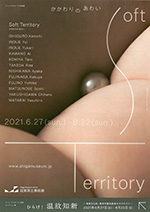 |
 |
 |
 |
| Soft Territory |
| 27 June - 22 August 2021 |
Shiga Museum of Art
(Shiga) |
 |
| Inaugurating the reopening of the museum after a lengthy closure for extensive remodeling, this show introduces new works by twelve young artists with ties to Shiga Prefecture. From 1986 to 1999 the museum hosted Shiga Annual, which featured artists active during that period, so this approach is something of a return to its roots. Avers the museum director: "A presentation like this one is risky, but a museum has to take risks if it wants promising young artists to work with it. Besides, we have curators who thrive on this kind of challenge."
|
|
|
 |
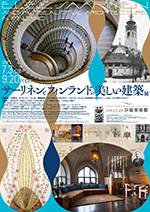 |
 |
 |
 |
| Eliel Saarinen and His Beautiful Architecture in Finland |
| 3 July - 20 September 2021 |
Panasonic Shiodome Museum of Art
(Tokyo) |
 |
| A spotlight on the Finland years of architect Eliel Saarinen (1873-1950), father of the renowned designer Eero Saarinen. Eliel made his debut with the design of the Finnish Pavilion for the 1900 Paris Exposition, garnering notice for a "national romantic" style that showcased the ethnic and cultural roots of his homeland. Yet he achieved his greatest success after leaving Finland in 1923 and settling in the United States, where he left national romanticism behind and introduced new forms of expression to the modernist movement. |
|
|

|
 |
 |
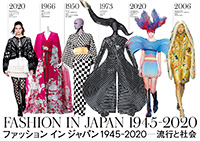 |
 |
 |
 |
| Fashion in Japan 1945-2020 |
| 9 June - 6 September 2021 |
The National Art Center, Tokyo
(Tokyo) |
 |
| Compared not only to the West but other regions as well, Japan has a brief history where Western-style attire is concerned. Not until after World War II did suits and dresses, trousers and skirts become standard wear for the majority of the population. In the decades since then, Japanese fashion has followed a fanciful path of its own, unfettered by precedent or tradition. And since the turn of the century that quirkily indigenous style has found favor with the world at large. As this retrospective of postwar Japanese fashion demonstrates, the engine driving the country's unique twists on Western apparel is a native love of the innovative and the chic. (For a detailed review, see the May 2021 Focus.) |
|
|
 |
 |
 |
 |
 |
| teamLab Reconnect: Art with Rinkan Sauna |
| 22 March - 23 November 2021 |
teamLab Reconnect
(Tokyo) |
 |
|
A long, low-lying prefab building that resembles a military barracks occupies a corner of a lot slated for redevelopment in Tokyo's Roppongi district. It turns out to be the venue of teamLab's latest venture -- a sauna. Instead of experiencing art in the exalted environment of a museum, visitors prepare to enjoy the art here by putting themselves in an exalted physical and mental state through alternating immersion in the hot and cold baths available on the premises. The "reconnect" of the title refers to the sauna-induced reconnection of our brain synapses, clearing the mind and sharpening the senses. The notion of immersing oneself in art in an altered state sounds almost like a forbidden pleasure, but that only makes the experience more alluring.
|
|
|
|
|
|
|
|

|
 |
 |
|
 |
 |
 |
 |
| Reborn-Art Festival 2021-22 |
| 11 August - 26 September 2021, 23 April - 5 June 2022 |
Ishinomaki and Oshika Peninsula
(Miyagi) |
 |
|
Held at numerous sites in the coastal city of Ishinomaki and on the nearby Oshika Peninsula, this festival gives equal weight to art, music, and food. The event, whose name references the area's ongoing recovery from the devastation of the March 2011 earthquake and tsunami, was launched in 2018. This year's theme is "Altruism and Fluidity." Festival chair Takeshi Kobayashi explains that as we confront Nature's ferocity in a different form today, the fluidity of the coronavirus inspires fear even while the fluidity of technologies like digital communications helps us cope with it. The festival further addresses the fluidity of boundaries between "self" and "other" as human beings become increasingly aware of themselves as a part of Nature.
|
|

|
 |
 |
 |
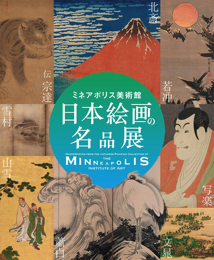 |
 |
 |
 |
| Masterpieces from the Japanese Painting Collection of the Minneapolis Institute of Art |
| 8 July - 5 September 2021 |
Fukushima Prefectural Museum of Art
(Fukushima)
|
 |
| Nestled on verdant grounds at the foot of Mt. Shinobu, symbol of Fukushima City, the museum provides an ideal environment for this splendid selection of Japanese art from the MIA's vast collection, now making the rounds of its country of origin. The 90-some works on display range from the medieval to the modern era and include sumi-ink paintings, works from the Kano and Rinpa schools, paintings by the Nanga literati and the "eccentrics," and ukiyo-e. |
|
|
 |
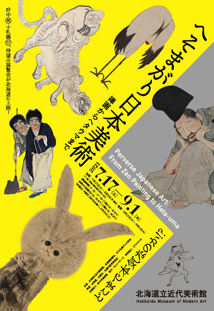 |
 |
 |
 |
| Perverse Japanese Art: From Zen Painting to Heta-uma |
| 12 June - 5 September 2021 |
Hokkaido Museum of Modern Art
(Hokkaido) |
 |
| Japan has long been known for art whose beauty and elegance have captivated viewers the world over. But there is also a contrary streak in Japanese aesthetics that revels in that which is ugly but fun, or even moving; the awkward and the imperfect can be just as memorable as works of conventional beauty. That same imp of the perverse romps in contemporary works variously referred to as yurui (loose) or heta-uma ("good-bad," i.e. crude yet charming). The curators of this show clearly had a good time assembling art of this description. Incidentally, the "perverse" of the title is, in Japanese, heso-magari -- a wonderful expression that literally means "belly-button-twisting." |
|
|
|
|
|
|
|
|
|
 |
|